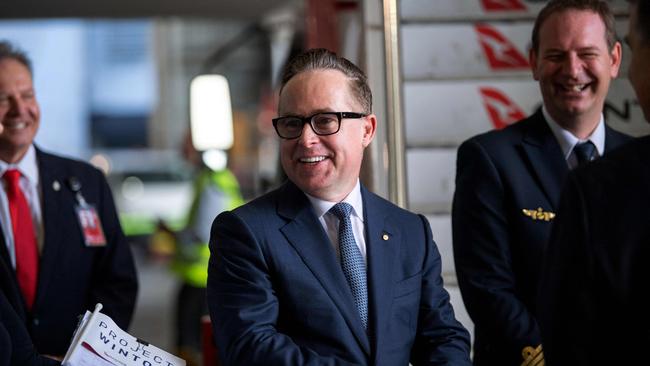
US markets believe the contraction accelerated by the replacement of “quantitative easing” with “quantitative tightening” could bring on a mild downturn without a series of draconian interest rate rises. Shares surged over the weekend despite the risk of an overshoot.
In Australia our “quantitative tightening” is less powerful so the window to avoid big interest rate rises is narrower. The Reserve Bank Governor is pleading with companies to keep salary increases well below 4 per cent. The government, in the election campaign was fanning a community expectation of wage rises of more than 5 per cent, but is now backing down and supporting the Reserve Bank.
Those monitoring the wellbeing of Australian middle-ranking executives tell me that many are showing extreme distress which will be impacting their effectiveness.
Executives earning in the broad $150,000 base salary range have received meagre increases in recent years so often bonuses have become an important part of remuneration. The hours are long but a lifestyle has developed including better-than-average dwellings, cars, lower-priced private schools (unless grandparents help) and child car. The second income from the spouse and bonuses have become an integral part of funding.
In the last 12 months the cost of living has increased dramatically and with the Reserve Bank predicting 7 cent price increases, it looks like getting worse. Higher interest rates are devastating because prices keep rising.
If the Reserve Bank is forced to dramatically slow the economy via higher unemployment then the spouses’ income and/or the bonuses could be in jeopardy. If that happens the house of cards that many middle-ranking Australian executives have built comes crashing down. This time around they want pay rises that equate with inflation.
The second version of the same distress concerns the “engine room” of the enterprise – the workforce being paid around $65,000 to $70,000. Skyrocketing prices makes it almost impossible for them to live on that income, especially with higher interest rates.
Over the weekend I was yarning to an employment placement operator who tells me that people placed in $65,000 to $70,000 jobs are coming back saying that they now can’t live on that income and are seeking new employment. The distress among the “engine room” of enterprises is also impacting the morale of executives.
A very similar phenomenon is taking place in China and they are looking to overcome it by lifting the prices of exports to countries like Australia – underlining that a big part of Australian inflation is caused by supply forces that are outside the interest rate target area.

Qantas CEO Alan Joyce gave his staff a $5,000 bonus in recognition of their efforts during the pandemic. I would be surprised if the airline is immune from the above forces.
Joyce appears to have implemented an innovative scheme to relieve some of the remuneration tension via a bonus without embracing a long term labour cost problem. He may be able keep base salaries in line with the Reserve Bank guidelines.
Like the central bank, Joyce will be hoping that inflation will be brought under control because, if it is not, then he like most enterprises will be under pressure to increase remuneration at a much higher rate. The consequent inflation will force much higher interest rates and a severe downturn.
Australia was initially much slower than the US in our “quantitative easing” government bond purchasing. And so early in 2020 the Reserve bank had bought only 9 per cent of Australian outstanding bonds – a third of the US level. But the Federal Reserve capped the total US bonds purchased below 30 per cent.
By contrast, in 2021 the Reserve Bank bought government bonds at a frantic rate quickly rising to around 35 per cent of the total bond holdings – above the US. Australia is now letting its bonds mature but, unlike the US, because we were so late it is not until 2024 that significant money is taken out of the system.
The “Albanese 5 per cent wage rise” was a vote winner in the wide community. Low paid workers have received 5.2 per cent via the Fair Work Commission but now Treasurer Jim Chalmers can see that if wage rises of 5 to 6 per cent become widespread, when combined with supply forces outside our control, Australian inflation will be locked into very high rates requiring draconian interest rate rises.
Former Reserve bank Governor Ian Macfarlane still has his finger on the pulse and is forecasting Australian inflation will settle around 4 four per cent rather than the 2 to 3 per cent rate forecast by the current Reserve Bank Governor.
The executive stress we are seeing represents a very deep problem and may require very different solutions to the blunt instrument of interest rates which curbs the inflation via severe employment reduction. We may need a different government spending and tax model which again will be the reverse of what was promised in the election campaign.








While a wave of optimism swept through Wall Street at the weekend, Australian chief executives and boards of large and medium sized enterprises find themselves between a rock and a hard place.